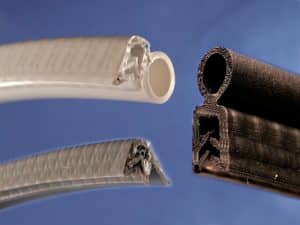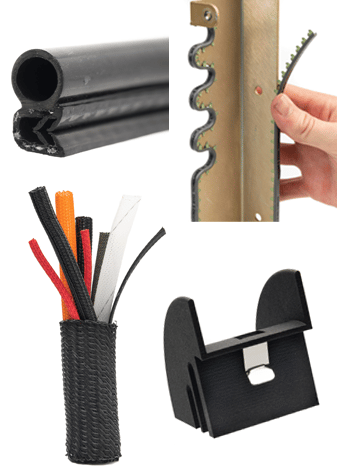The passenger rail industry is facing increasing competition along with some significant cost pressures as governments and operators look to improve reliability, efficiency and rail safety. A good portion of the cost pressure is driven by current, and anticipated safety regulations for every kind of rail transit that exists – and there are many market segments some of which overlap: Urban rail, Subway systems, Rapid transit, High-speed rail, Elevated rail, Commuter rail, Interurban/Intercity rail, Light rail, Very light rail, Ultra light rail and the host of acronyms that it has spawned RRT, LRT, HST etc .
International Supply Chain Complexity
For manufacturers, supply chain complexity has increased as more components get sourced worldwide which in turn has meant that the manufacturing, maintenance, repair and overhaul (MRO) function – once just the province of aerospace –have had to adapt to mirror these changes.
One of the problems manufacturers and design engineers face is that the rail FST standards can vary from country to country. DTi specialize in helping rail OEMs get the appropriately qualified material for their project.
For materials planning the rail industry is driving toward more fire resistant materials which can mitigate the risk of injuries, property damage (and let’s face it liability) resulting from rail transit fires -whether they are caused by wires chafing which can lead to arcing and sparking or in the worst case scenario – crashes.
FST resistant materials should give passengers and staff time to react and get out safely even while there may be panic and confusion. Special FST materials are needed as they can prevent “flashover fires” that are essentially caused by regular household materials releasing gases that ignite as temperatures rise as flame takes hold.
The importance of FST resistance can be seen in the short NIST Youtube video below. It shows how incredibly fast flashover fires can move. FST resistance can save lives as it can give people time to get out.
The regulatory environment worldwide has driven a broad set of standards that apply to flame, smoke, and toxicity (FST) which apply to any material in the rolling stock: seats, floors, wall panels, trim, insulation etc. It’s FST because while flame/fire is deadly by itself it also creates smoke that prevents people from seeing their escape exits and toxic gases that can incapacitate and kill passengers and employees.
Rail FST Standards
Here are some of the standards that are needed for FST products
Flame
ASTM E162 standard for surface flammability.
ASTM C1166 standard for flame propagation
FAR 25.853 Federal standard for flammability
Smoke
ASTM E1354 standard for release rates for both heat and visible smoke.
ASTM E662 standard for the optical density of smoke.
Toxicity
ASTM E662/BSS 7239 standard for toxic gas generation by materials on combustion (US and EU)
General
EN 45545-2 European Union standard fire testing for railway components
NFPA 130 standard for fire protection & life safety for guideways in Transit & Passenger Rail Systems
Another toxicity factor for EU compliance is RoHS: an EU directive that restricts substances that could be harmful or create toxic waste. Buyers need a Certificate of Conformity (COC) for any customs clearance.
DTi Railcar FST Products
Device Technologies (DTi) headquartered in Southborough MA with a subsidiary in Hamburg Germany has a long pedigree providing FST compliant products for the mass transit industry. We can help you meet your FST requirements for your rail application.
DTi seals are made from EPDM/PVC and Silicone and are FST compliant with the standards listed above.

DTi can also provide easy one fit seal applications by pre-joining the terminating ends.
FST products by DTI
Spring-Fast SL-FST Grommet Edging
Seal –Fast Seals
Trim-Fast Edge Trim
Request free samples here

